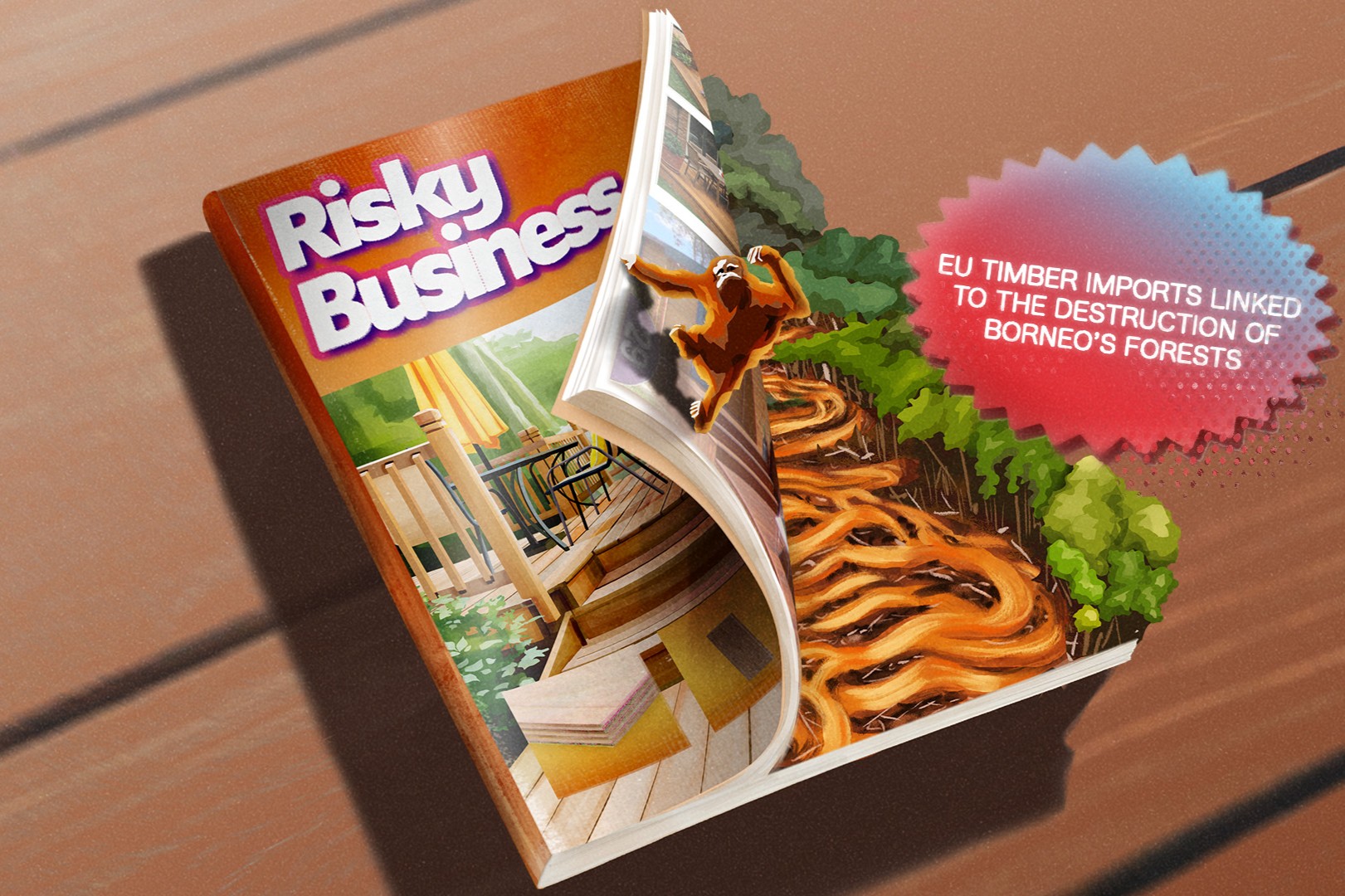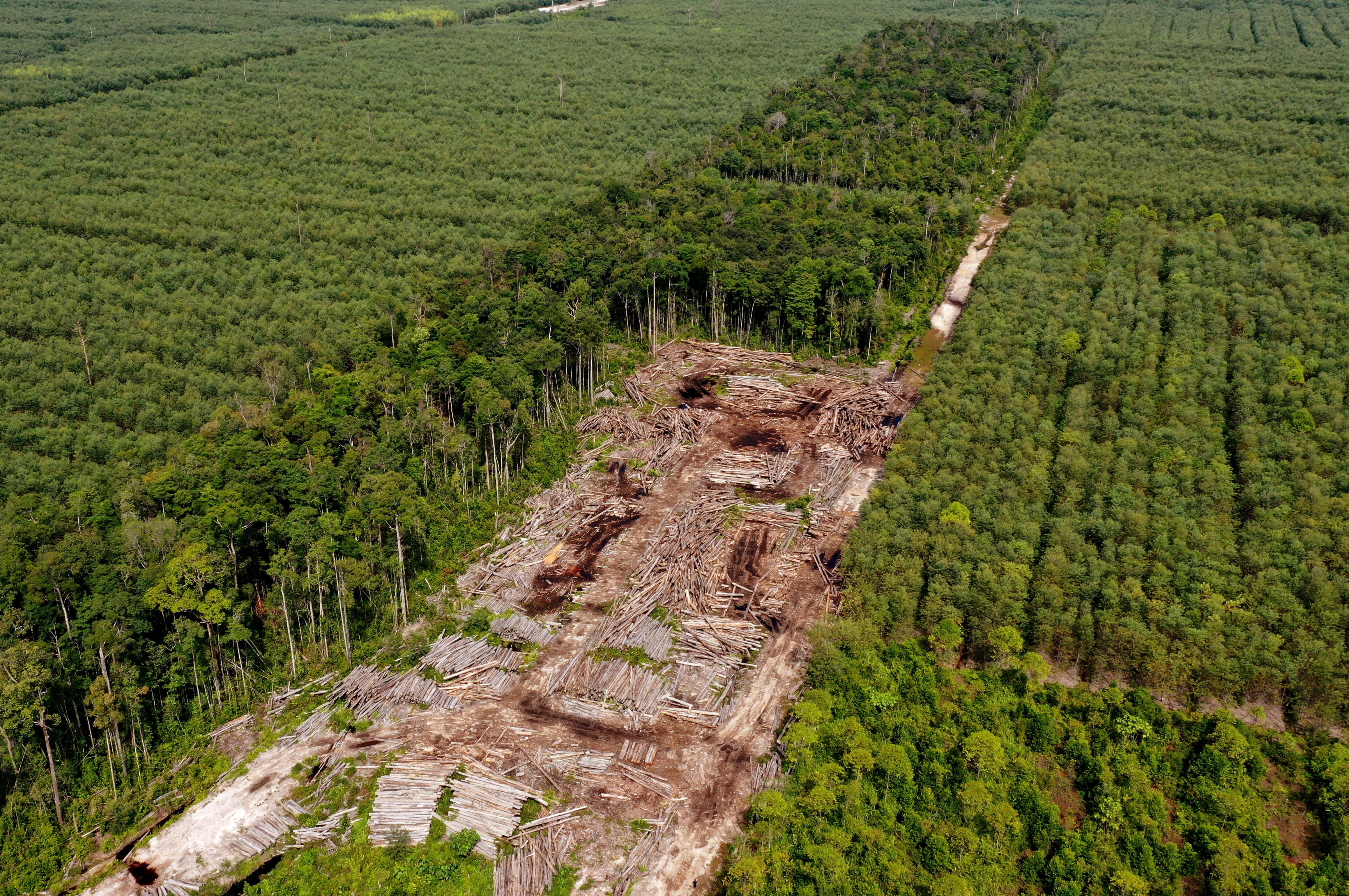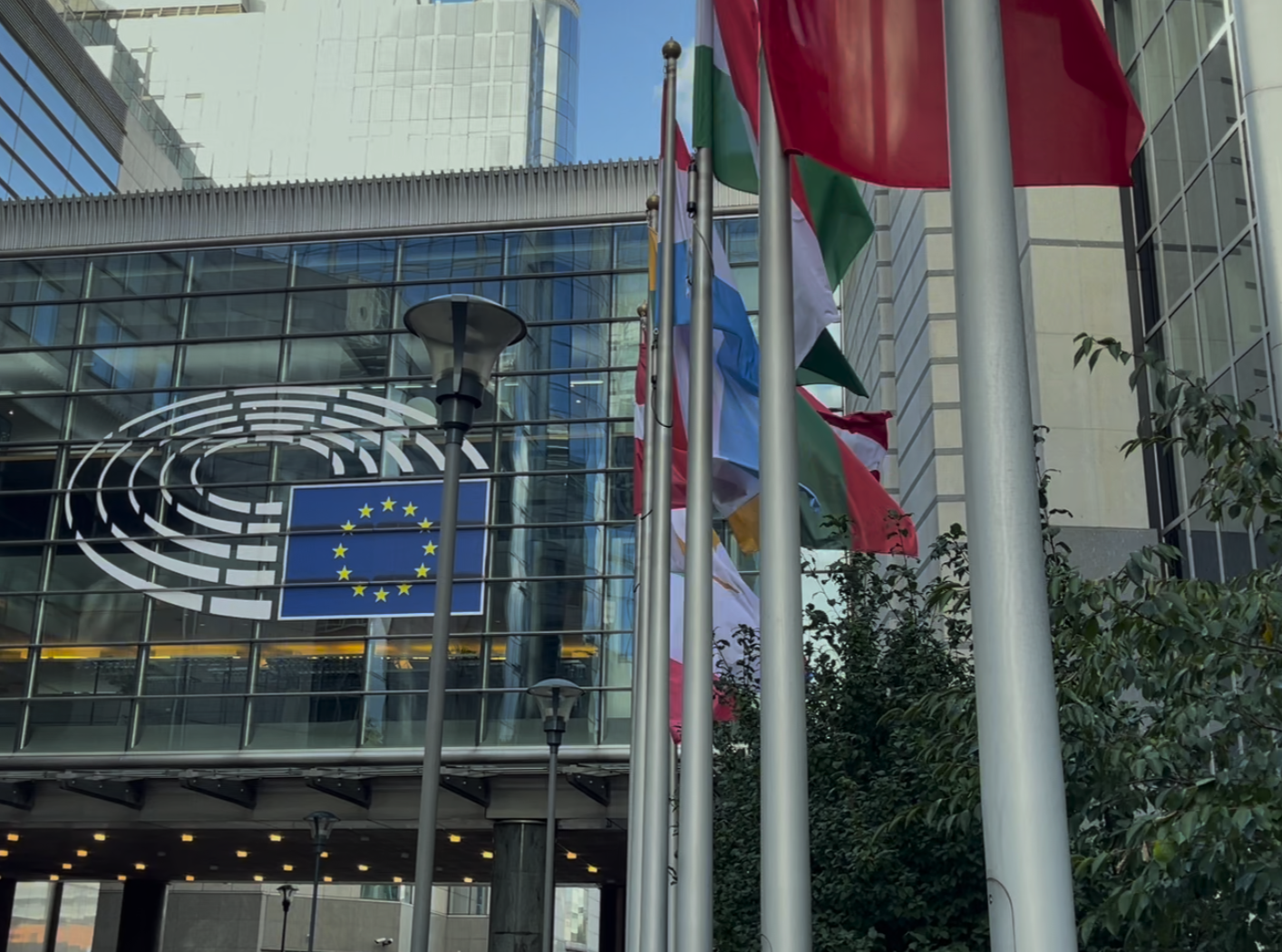- Legislative developments in the European Parliament leave leather at risk of being untouched by planned regulation on deforestation-free products, with leather industry lobbying hard to achieve this
- Earthsight obtained industry letters to one MEP asking them to exclude leather from the scope of the regulation
- The industry groups falsely claim that there is no link between leather products and deforestation and that it would be impossible to trace leather back to farm
Leather may remain unregulated under a planned EU law on deforestation-free products as industry associations lobby against its inclusion with worrying signs of potential success.
The planned law intends to impose due diligence obligations on importers and traders of ‘forest-risk commodities’ like soy, beef and palm oil to ensure that these are not linked to deforestation. The Proposal for a regulation on deforestation-free products, which currently does include leather, was proposed by the European Commission in November 2021 and is now under debate in the European Parliament and the Council. A plenary vote in the Parliament is expected in September and will be followed by further negotiations between the European Parliament and Council.
Earthsight obtained industry letters recently sent to one MEP asking them to exclude leather from the regulation. The documents are from the Conseil National Du Cuir (French Leather Council, or CNC) and the European Confederation of the Footwear Industry (CEC).
Claims made by these trade bodies are particularly worrisome as the file’s rapporteur in the European Parliament, MEP Christophe Hansen, tabled an amendment suggesting dropping leather from the scope of the law in his draft report for the Committee on the Environment, Public Health and Food Safety.
In the report, the CNC is the only organisation from the leather sector listed as an organisation from which Hansen received input.
The industry groups make a number of claims that are not only incorrect but also dangerous for the world’s remaining forests and communities dependent on them.
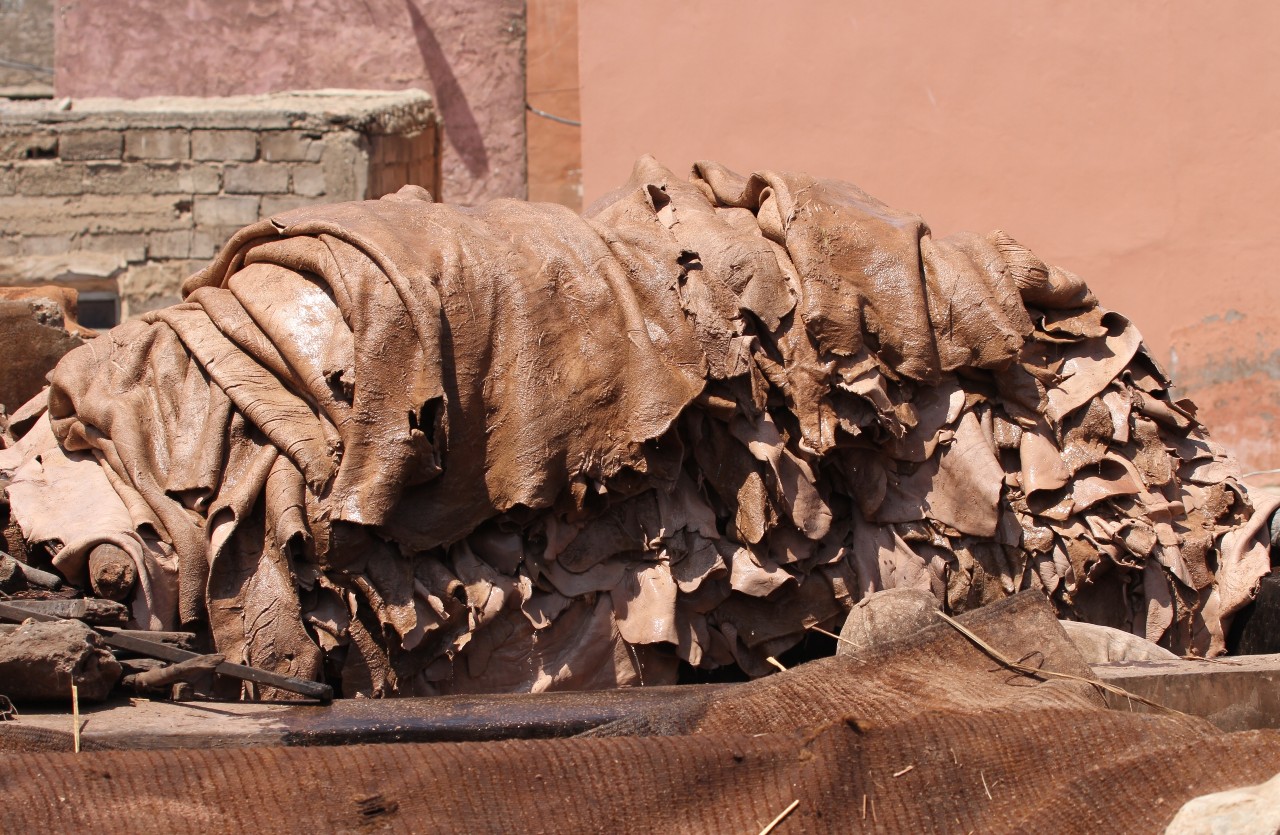
Cattle hides awaiting processing
False claim # 1: Leather is a by-product of beef production and therefore has no impact on deforestation
In its letter to the MEP sent in March 2022, the CNC claims that “animals are raised exclusively for their meat and milk and not for their skin, which is classified as a by-product of the food industry.” As such, the CNC concludes that leather’s “impact cannot be analyzed and assessed in the same way as the derivatives targeted by the proposal regulation.”
The confederation, which represents 20 federations and professional unions from the French leather industry, goes so far as to state that “the transformation of the skin into leather corresponds to an activity of recycling one of the by-products.”
Likewise, the CEC, whose members account for approximately 88 per cent of footwear production in the EU, argues in its letter to an MEP from May 2022 that “leather is obtained by hides and skins, a by-product of the food sector that would eventually be disposed of in landfills or incinerated. […] [B]ovines are raised exclusively for food purpose, and the treatment of their skins does not play any role in this process.”
But what the industry lobbyists call a by-product or even an act of recycling is in fact a multibillion-dollar industry. The global leather goods market was valued at over US$400 billion in 2021.
The industry also fails to acknowledge that while most Brazilian beef (around 80 per cent) is consumed domestically, the majority of the country’s leather (around 80 per cent) is exported, meaning that EU consumption can have a big impact on the Brazilian cattle sector and therefore on deforestation.
Industry lobbyists, however, continue to talk down its role and potential impact in the cattle sector.
In its letter, the CEC states that “[d]ata show that the trade of skin is definitely not a profitable business for slaughterhouses: the value of skins is estimated between 2 and 5% of the overall value of the carcass, while the gross margin of EU slaughterhouses does not pass 3%.” The CNC echoes this point in its letter.
Such statements are deeply misleading. In fact, analysis of income and profit margins for meat, leather and other products shows that meatpacking plants sometimes only operate at a profit because of the sales of leather and other co-products.
Analysis by US-based conservation organisation National Wildlife Federation using Scot Consultoria data, viewed by Earthsight, indicates that meatpackers in Brazil would operate at a 3.2 per cent loss with only beef sales as opposed to a profit of 4.2-13.8 per cent when leather and other products are included, of which leather is the most valuable. Some studies suggest that a cow’s hide accounts for 7-8 per cent of the animal’s total value at the point of slaughter, and a much higher proportion of the sales value. Global exports of hides and leather at $28.5 billion are on a par with exports of beef ($29.2 billion). Some estimate that leather can account for up to 26 per cent of the big slaughterhouses’ earnings. JBS, the world’s largest meatpacker, processes its own hides at its own tanneries, therefore profiting from leather manufacture and trade.
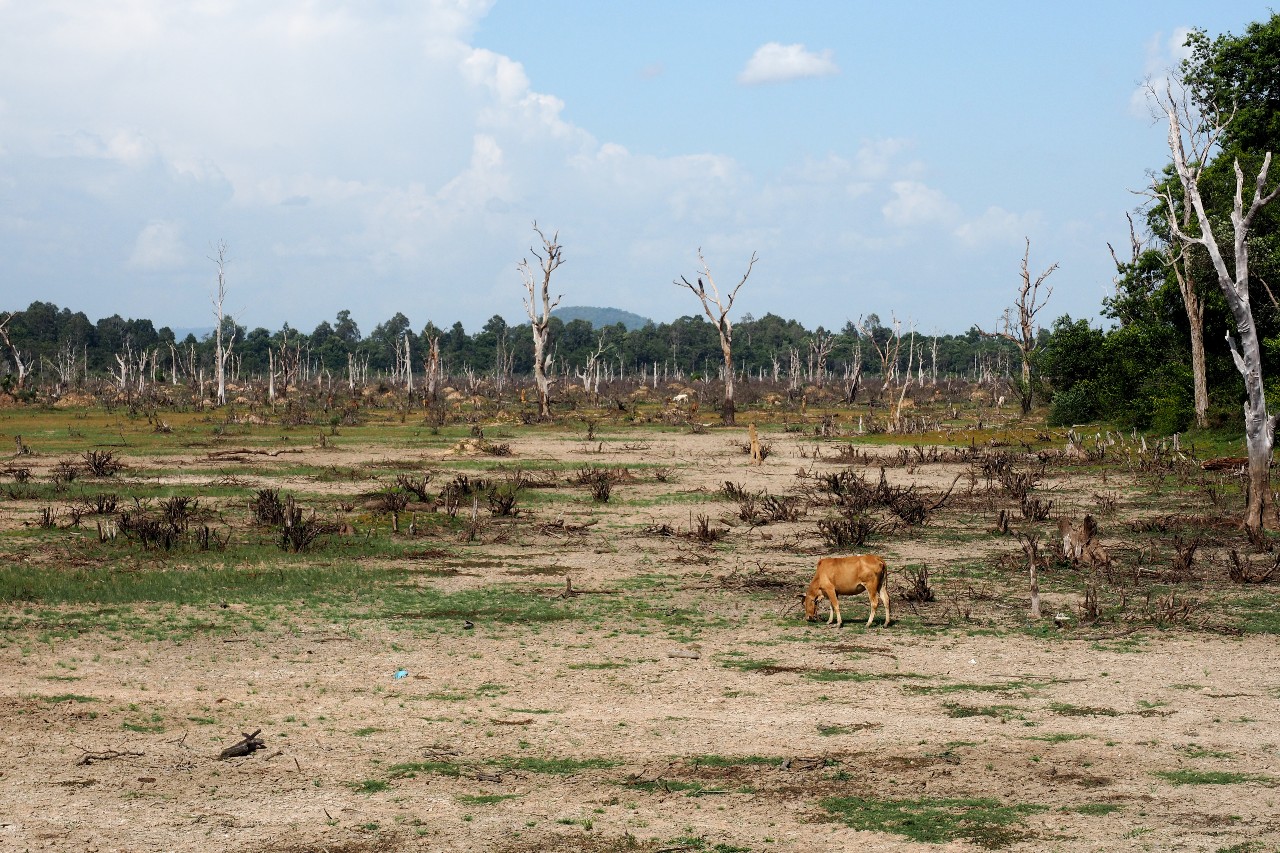
Cattle on deforested land
Slaughterhouses don’t extract, process and sell cattle hides into the leather industry out of a sense of charity. They do it because it makes business sense. And with tight margins in the cattle industry, the extra revenue ranchers receive from the hides could make the difference in deciding whether clearing further forest is a profitable investment.
Contrary to industry’s claims, leather is an integral part of the cattle industry.
An industry this large and influential should not go unchecked. Instead, it needs to be made to apply its resources to promoting deforestation-free supply chains.
False claim # 2: There is no evidence that leather is linked to widespread deforestation
The CEC’s letter states that “nobody so far has been able to respond to the question of how many hides or skins are actually derived from animals having been raised in illegally deforested area, suggesting that the percentage of such commodities must be marginal.”
While the CEC only refers to illegal deforestation, both legal and illegal deforestation will be relevant under the planned regulation. And there is, in fact, ample evidence linking leather consumed in Europe to both.
Earthsight, Rainforest Foundation Norway and The New York Times have shown multiple times that tanneries, manufacturers, and slaughterhouses in producer and consumer markets are linked to ranches implicated in deforestation, including illegal deforestation.
The best available data suggest these are not isolated cases. The independent trade data platform Trase, using established peer-reviewed estimation methodologies, has shown that, per US dollar, leather imported to the EU carries a much higher risk of deforestation than cocoa, palm, soy, or even beef (see chart). A large study commissioned by the European Commission in 2013 also concluded that almost 400,000 hectares of deforestation per year was ‘embodied’ in the EU’s imports of leather, and that leather represented some 6 per cent of total embodied deforestation allocated to EU27 final consumption of goods and services.
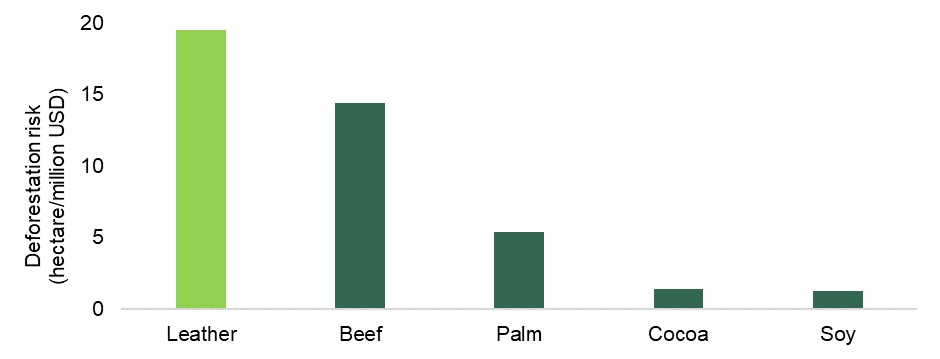
Deforestation per dollar of products imported to the EU (Trase Data and Methodology, UN Comtrade): The most recent available deforestation data for each commodity was used. For palm oil this was 2015, for beef and soy this was 2017, and for cocoa this was 2019. Trase uses methodology from Godar et al. 2015 to link individual supply chain actors to specific, subnational production regions and the sustainability risks associated with those regions. Please click here for their full methodology. Beef and leather risk were estimated as the proportion of total cattle deforestation risk (as calculated by Trase) based on the relative value of the commodity imported to the EU in the same year. Import values are from UN Comtrade, 2017. HS codes used in the search query for beef and leather are those included in the European Commission's published proposal.
What’s more, many in the leather industry do acknowledge the link between leather and deforestation. To this end, the Leather Working Group, a certification scheme with over 1,300 members across the leather supply chain, has set up traceability requirements to tackle deforestation stating that “[a]chieving the goal of deforestation and conversion free leather is a key priority uniting our members.”
However, LWG’s scheme is strikingly deficient. Two of Europe’s largest tanneries, Gruppo Mastrotto and Conceria Pasubio, were both linked to illegal deforestation in Paraguay in Earthsight’s Grand Theft Chaco report. Since the report’s publication, Pasubio has become an LWG gold-rated member despite the firm scoring only 44 per cent on its traceability volume. Gruppo Mastrotto has also achieved gold rating with zero per cent traceability volume. This further highlights the urgent need for regulation.
False claim # 3: Traceability of leather supply chains is impossible
In its letter, the CEC claims “it is not possible for EU operators, predominantly SMEs, to ensure an official traceability, regardless the origin of the supplies. Tanners providing leather to the footwear industry are only able to receive traceability information from their immediate supplier, but not from any precedent stage, making impossible to comply to the due diligence requirements included in the Regulation.”
While it is true that leather is currently not traced back to the plot of land, it is false to state that this will never be possible. It merely shows that industry self-regulation is not sufficient. The fact that they cannot currently do this does not mean that they couldn’t if they tried. Lawmakers have already acknowledged that work will be needed to comply, by allowing a lengthy grace period before the law comes into full effect.
The independent evidence shows that it has been greed, not practical problems, which have prevented traceability in the leather sector progressing further already. Earthsight’s Grand Theft Chaco revealed in 2020 that even when exporting tanneries in Paraguay have wanted to implement more robust traceability systems, European customers were uninterested in this effort due to fears about costs. A major Italian tannery told Earthsight’s undercover investigators that traceability was readily achievable, but that it could not be bothered with taking the necessary steps because none of its customers demanded it.
If traceability will be required for other cattle products covered by the planned regulation, it is hard to see why this should not also be possible for leather. Regardless of particularities in the leather market, the hardest node to identify in cattle supply chains is that between farms and slaughterhouses. This part of the supply chain is the same for any cattle product.
If the new planned regulation is to be effective in its goals, it is essential that EU policy makers stand firm in the face of the misinformation being touted by self-interested industry lobbyists looking to protect their profits at the expense of the world’s forests.
Failure to include leather would also leave the EU behind regulation in other consumer markets. Similar laws in the US and UK, currently underway and aimed at minimising these countries’ contribution to global deforestation, are set to cover leather in addition to beef.
